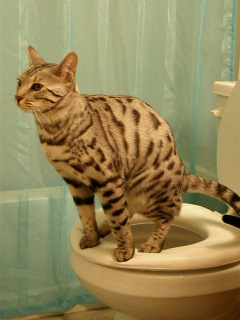What are your opinions about How to Dispose of Cat Poop and Litter Without Plastic Bags?

Intro
As feline owners, it's necessary to be mindful of how we dispose of our feline buddies' waste. While it may appear hassle-free to flush pet cat poop down the commode, this technique can have damaging repercussions for both the atmosphere and human health.
Alternatives to Flushing
The good news is, there are more secure and a lot more responsible means to throw away feline poop. Consider the adhering to alternatives:
1. Scoop and Dispose in Trash
One of the most typical approach of throwing away cat poop is to scoop it right into a biodegradable bag and toss it in the trash. Make sure to make use of a devoted clutter inside story and get rid of the waste without delay.
2. Use Biodegradable Litter
Select eco-friendly cat trash made from products such as corn or wheat. These clutters are environmentally friendly and can be safely thrown away in the garbage.
3. Bury in the Yard
If you have a yard, consider burying feline waste in an assigned location far from veggie yards and water resources. Make sure to dig deep adequate to stop contamination of groundwater.
4. Mount a Pet Waste Disposal System
Buy a family pet garbage disposal system particularly created for feline waste. These systems use enzymes to break down the waste, decreasing odor and ecological effect.
Health and wellness Risks
In addition to environmental problems, purging cat waste can also posture health and wellness threats to humans. Pet cat feces might include Toxoplasma gondii, a bloodsucker that can trigger toxoplasmosis-- a potentially extreme disease, specifically for expecting ladies and people with weakened body immune systems.
Environmental Impact
Purging cat poop presents damaging pathogens and bloodsuckers into the water system, posing a considerable risk to water ecological communities. These pollutants can adversely influence marine life and compromise water top quality.
Conclusion
Responsible family pet ownership extends beyond supplying food and sanctuary-- it also includes correct waste monitoring. By avoiding purging cat poop down the toilet and choosing alternate disposal techniques, we can lessen our ecological impact and secure human health and wellness.
Why Can’t I Flush Cat Poop?
It Spreads a Parasite
Cats are frequently infected with a parasite called toxoplasma gondii. The parasite causes an infection called toxoplasmosis. It is usually harmless to cats. The parasite only uses cat poop as a host for its eggs. Otherwise, the cat’s immune system usually keeps the infection at low enough levels to maintain its own health. But it does not stop the develop of eggs. These eggs are tiny and surprisingly tough. They may survive for a year before they begin to grow. But that’s the problem.
Our wastewater system is not designed to deal with toxoplasmosis eggs. Instead, most eggs will flush from your toilet into sewers and wastewater management plants. After the sewage is treated for many other harmful things in it, it is typically released into local rivers, lakes, or oceans. Here, the toxoplasmosis eggs can find new hosts, including starfish, crabs, otters, and many other wildlife. For many, this is a significant risk to their health. Toxoplasmosis can also end up infecting water sources that are important for agriculture, which means our deer, pigs, and sheep can get infected too.
Is There Risk to Humans?
There can be a risk to human life from flushing cat poop down the toilet. If you do so, the parasites from your cat’s poop can end up in shellfish, game animals, or livestock. If this meat is then served raw or undercooked, the people who eat it can get sick.
In fact, according to the CDC, 40 million people in the United States are infected with toxoplasma gondii. They get it from exposure to infected seafood, or from some kind of cat poop contamination, like drinking from a stream that is contaminated or touching anything that has come into contact with cat poop. That includes just cleaning a cat litter box.
Most people who get infected with these parasites will not develop any symptoms. However, for pregnant women or for those with compromised immune systems, the parasite can cause severe health problems.
How to Handle Cat Poop
The best way to handle cat poop is actually to clean the box more often. The eggs that the parasite sheds will not become active until one to five days after the cat poops. That means that if you clean daily, you’re much less likely to come into direct contact with infectious eggs.
That said, always dispose of cat poop in the garbage and not down the toilet. Wash your hands before and after you clean the litter box, and bring the bag of poop right outside to your garbage bins.
https://trenchlesssolutionsusa.com/why-cant-i-flush-cat-poop/

We hope you liked our part on Don’t flush cat feces down the toilet. Thanks a lot for taking a few minutes to read our article post. Those who liked our article plz remember to pass it around. We enjoy reading our article about How to Dispose of Cat Poop and Litter Without Plastic Bags.
Book Services